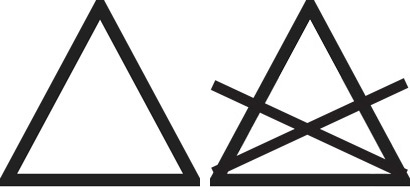FAQ
What are the different types of lace?
– The knotted net embroidery
The knotted net embroidery is practiced as follows. First, the net must be knotted. Traditionally, this tedious work is done by hand using a shuttle. Then once ready, the net is stretched onto a wooden embroidery frame. Finally, it is possible to embroider all sorts of motives using a needle, according to a predefined pattern or even following one’s imagination. The colors used can also vary.
– Tatting
Tatting is a technique for handcrafting a particularly durable lace from a series of knots and loops. It is traditionally practiced with a small shuttle on which the thread is wound. The lace is formed by a pattern of rings and chains made from a series of knots over a core thread. Gaps can be left between the stitches to form picots, which are used for practical construction as well as decorative effect. Tatting lace is often used as a decoration to fix on fabrics, as is the case here.
In German, tatting is usually known by the Italian-derived word Occhi, which means “eyes”; in Italian, tatting is called chiacchierino, which means “chatty”.
– Crochet
Crochet is practiced with a single instrument, a hook. Usually in crochet, there is only one live stitch on the hook, while knitting keeps an entire row of stitches active simultaneously. There are some types of basic crochet stitches. Crochet is traditionally worked on the basis of a written pattern, describing the stitches using abbreviations.
– Lace knitting
Lace knitting is a delicate artistic technique. By combining the increments of small holes with matching decreases, it is possible to create a very light fabric like lace: it is lace knitting. The large and numerous holes in the lace make it extremely elastic: for example, some shawls in Shetland are called “wedding ring shawls” because they are so fine that they can pass through a wedding ring.
– Bobbin lace
Bobbin lace is a lace textile made by braiding and twisting lengths of thread, which are wound on bobbins to manage them. As the work progresses, the weaving is held in place with pins set in a lace pillow, the placement of the pins usually determined by a pattern or pricking pinned on the pillow.
What do the care symbols for textiles mean?
Here’s how to understand care labels and instructions for washing, drying, ironing, etc.
Washing: symbol of a tub for machine washing

- Crossed out: not to be washed in the washing machine
- With a hand: hand wash, with a maximum temperature of 40°C
- One line under the tub: synthetic program, which means normal washing, decreasing rinse temperature and reduced spin speed
- Two lines under the tub: wool or delicate washing program
- With a figure: indication of the maximum temperature to be used
Symbols involving laundry drying are square in shape

1. Machine drying: square symbol containing a circle
- One dot: very delicate, dry at 60°C maximum
- Crossed out: not to be machine dried
- Two dots: delicate, dry at 80°C maximum
2. Air drying: square symbol containing various lines

- One horizontal line: dry flat after spinning in the washing machine
- Two horizontal lines: dry flat without machine spinning
- One vertical line: hang after spinning in the washing machine
- Two vertical lines: hang without machine spinning
Ironing: symbol of an iron. The number of dots corresponds to what is indicated on the iron itself.

- Crossed out: do not iron
- One dot: very delicate, ironing at a maximum temperature of 110°C
- Two dots: delicate, ironing at a maximum temperature of 150°C
- Three dots: ironing at a normal temperature of 200°C
Bleaching: triangle symbol

- White: all bleaching is allowed
- Crossed out: do not bleach
Professional cleaning: the circle

- The crossed out white circle: no dry cleaning allowed
- The crossed out black circle: no water cleaning allowed
The lines under the circle indicate the intensity of the authorized cleaning

- No line: normal cleaning
- One line: moderate cleaning
- Two lines: very moderate cleaning
The letters in the circle indicate the products to be used

- P: dry cleaning with products based on perchloroethylene and other petroleum solvents
- F: dry cleaning with only petroleum solvents
- W: professional cleaning with water
